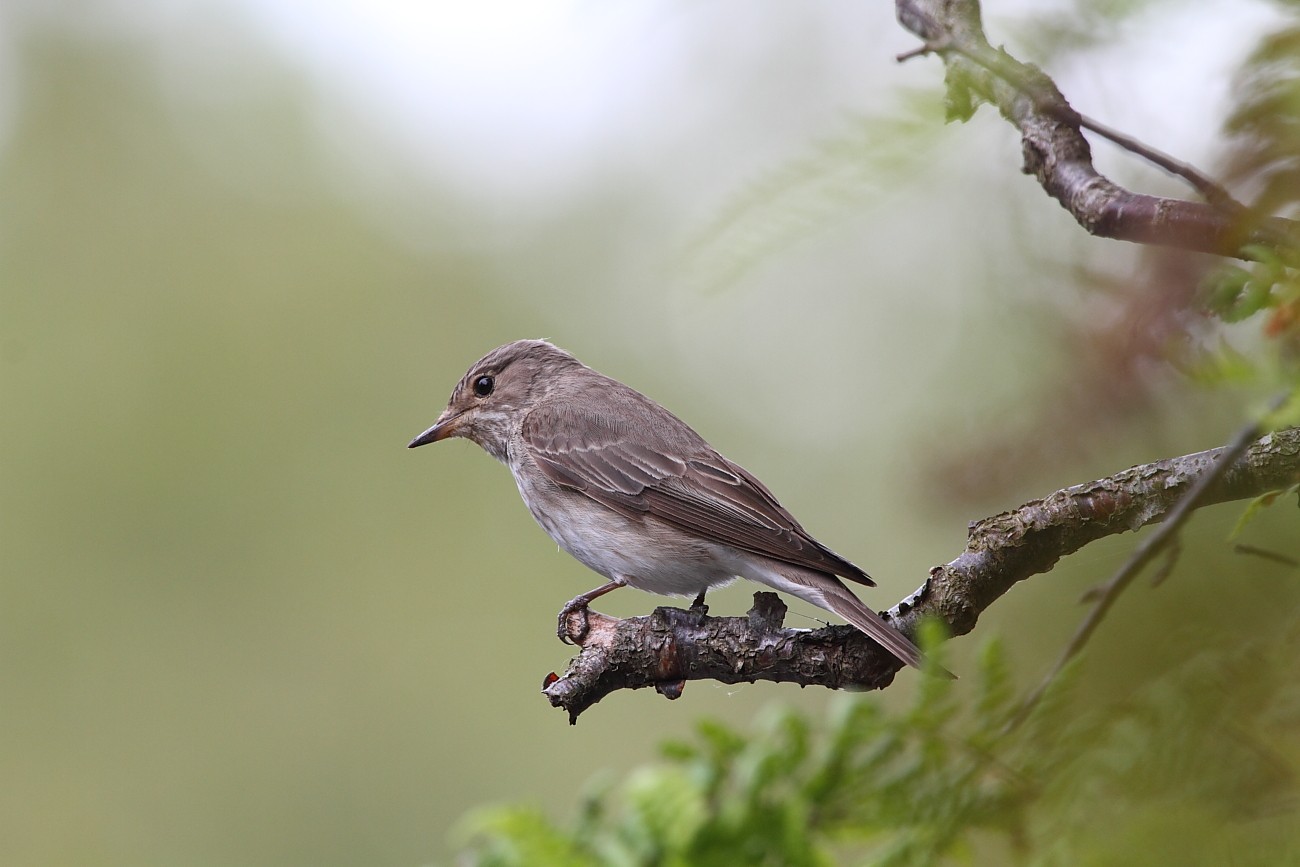Spotted Flycatcher
A species of Typical Plain Flycatchers Scientific name : Muscicapa striata Genus : Typical Plain Flycatchers
Spotted Flycatcher, A species of Typical Plain Flycatchers
Botanical name: Muscicapa striata
Genus: Typical Plain Flycatchers
Content
Description People often ask General Info
 Photo By Marton Berntsen , used under CC-BY-SA-4.0 /Cropped and compressed from original
Photo By Marton Berntsen , used under CC-BY-SA-4.0 /Cropped and compressed from original Description
Look for the spotted Flycatcher in open areas with trees. Placing a nesting box in the yard can attract the small bird to the garden. The bird hunts for flying insects from tree branches. It’s not uncommon for the bird to return to the same branch. The small bird has a wide range stretching from Europe to Asia and Africa.
Size
15 cm
Life Expectancy
9 years
Nest Placement
Tree
Feeding Habits
Spotted Flycatcher's diet consists of spiders, earthworms, snails, small fruits, and berries. Specializing in aerial hunting, spotted Flycatcher captures a variety of insects including diptera and lepidoptera. Spotted Flycatcher exhibits unique snap-catching tactics and shows a preference for perched ambushes.
Habitat
Spotted Flycatcher occupies diverse habitats including open woodlands and mature tree areas within deciduous or coniferous forests, forest edges, and near water bodies. This species adapts to human-altered landscapes like parks and gardens. Its range spans from sea-level to 2000 meters, occasionally reaching 3000 meters in African non-breeding habitats, which also comprise broadleaf woodlands and savannas.
Dite type
Insectivorous
People often ask
General Info
Feeding Habits
Bird food type
Bird Feeder Type

Platform
Sounds
Call
Recording location: Belgium
Call
Recording location: Namibia
Behavior
Spotted flycatchers hunt from conspicuous perches, making sallies after passing flying insects, and often returning to the same perch. Their upright posture is characteristic. Most passerines moult their primary flight feathers in sequence beginning near the body and proceeding outwards along the wing. The spotted flycatcher is unusual in replacing the outer flight feathers before those nearer the body. 
Species Status
Not globally threatened.
Scientific Classification
Phylum
Chordates Class
Birds Order
Perching birds Family
Old world flycatchers Species
Spotted Flycatcher